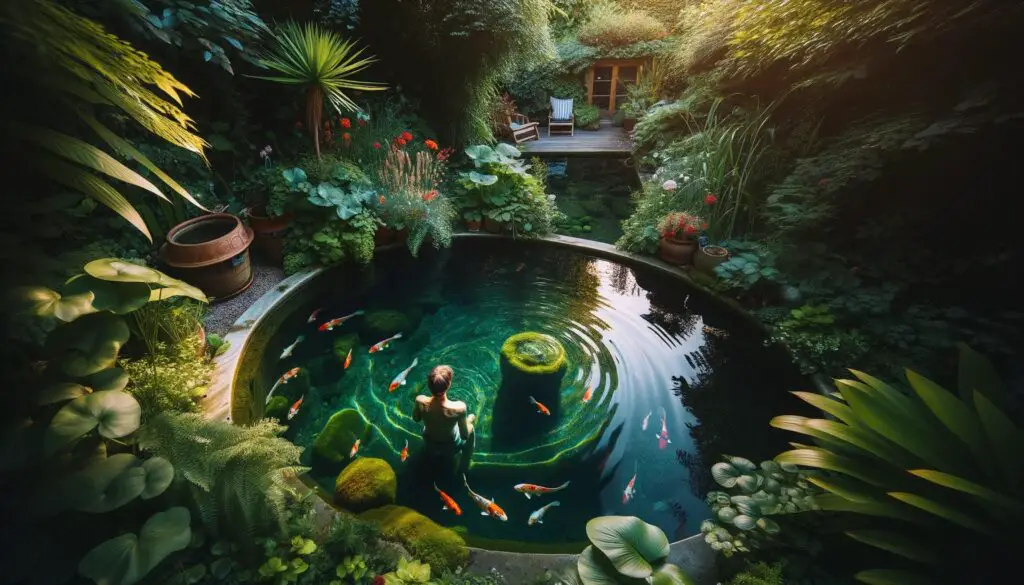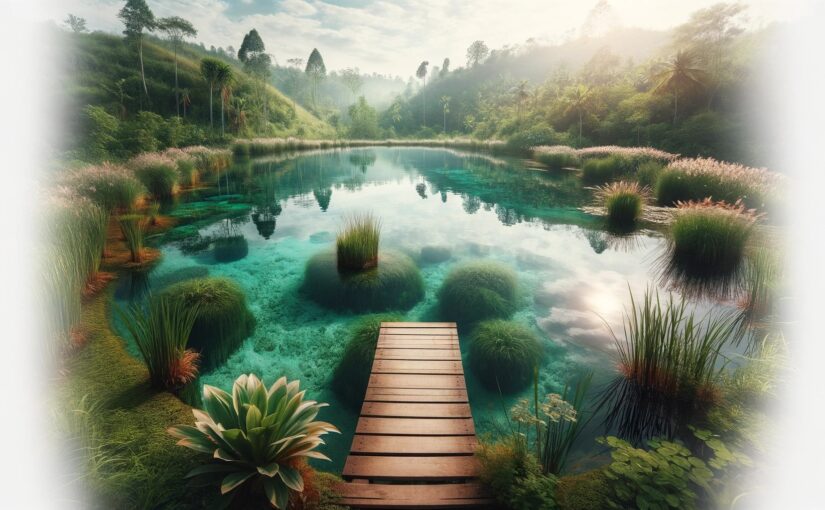One fascinating concept that has gained popularity is the “swimming pond.” This innovative approach not only offers a unique aesthetic appeal to properties but also serves multiple purposes, including the potential for food production. In this article, we will explore the pros and cons of swimming ponds compared to traditional pools. As well as, the possibility of integrating aquaculture for a self-sustaining food source, and offer guidance on how to create your own natural swimming pond.
The Pros and Cons: Swimming Ponds vs. Traditional Pools
Pros:
- Environmental Integration: Swimming ponds blend seamlessly with the landscape. This promotes biodiversity and attracts wildlife, creating a living ecosystem in your backyard.
- Chemical-Free Water: Unlike traditional pools that rely on chlorine or other chemicals for cleaning, swimming ponds use natural filtration systems (like plants and microorganisms) to purify water.
- Year-Round Interest: Even in colder months when swimming is off the table, a swimming pond remains a visually appealing water feature, supporting a variety of aquatic and surrounding plant life.
- Potential for Food Production: By incorporating fish and edible plants, a swimming pond can also function as a source of food, adding an element of permaculture to your property.
Cons:
- Initial Cost and Setup: Establishing a swimming pond can be more expensive initially. This is due to the need for specialized design and landscaping to ensure proper water filtration and ecosystem balance.
- Maintenance Knowledge: Understanding the ecosystem and maintaining balance is crucial. Owners must be knowledgeable or willing to learn about aquatic plant care, seasonal changes, and ecological health indicators.
- Space Requirements: A natural swimming pond requires more space than a traditional pool to accommodate the filtration zones and ensure a healthy ecosystem.
- Wildlife Encounters: While attracting wildlife is seen as a benefit, it can also be a con for some, as it might lead to unwanted visitors in your swimming area.

Integrating Aquaculture: A Sustainable Food Source
Introducing fish to your swimming pond not only adds to the natural beauty and ecological balance but also offers an opportunity for sustainable food production. Species like carp, tilapia, or trout can thrive in this environment. So, it provides a fresh source of protein right from your backyard! It’s important to research and choose species that are suitable for your climate and the specific conditions of your pond. Additionally, integrating aquatic plants like watercress or lotus can offer both purification benefits and edible harvests.
Creating Your Own Swimming Pond: Steps and Considerations
- Planning and Design: Start with a clear plan that includes the size, depth, and location of your pond. Consider hiring a professional with experience in swimming ponds to ensure a functional and sustainable ecosystem.
- Regulation Compliance: Check local regulations and zoning laws. This ensures that your project is compliant, especially if you plan to introduce fish.
- Filtration Zone Creation: Designate areas for natural filtration. This typically involves a regeneration zone planted with specific aquatic plants known for their purifying properties.
- Construction and Planting: After excavating, line your pond with a suitable underlay and liner. Then, strategically plant the selected aquatic plants in the regeneration zone.
- Water Management: Initially, you may need to adjust water levels and add beneficial bacteria to kickstart the ecosystem. Regular monitoring of water quality and clarity is essential for maintaining a healthy swimming pond.
- Fish Introduction: Once the pond and plants are established, and the water quality is stable, you can introduce fish. Ensure the species are appropriate for your pond’s size and the local climate.
Conclusion: Swimming Ponds
Swimming ponds offer a compelling alternative to traditional pools, aligning with eco-friendly principles while providing a multifunctional landscape feature. By understanding the intricacies of building and maintaining a natural swimming pond, homeowners can enjoy the benefits of a chemical-free swimming environment that harmonizes with nature and even serves as a sustainable food source. As we embrace more sustainable living practices, the swimming pond stands out as a beacon of innovation in residential landscaping.
